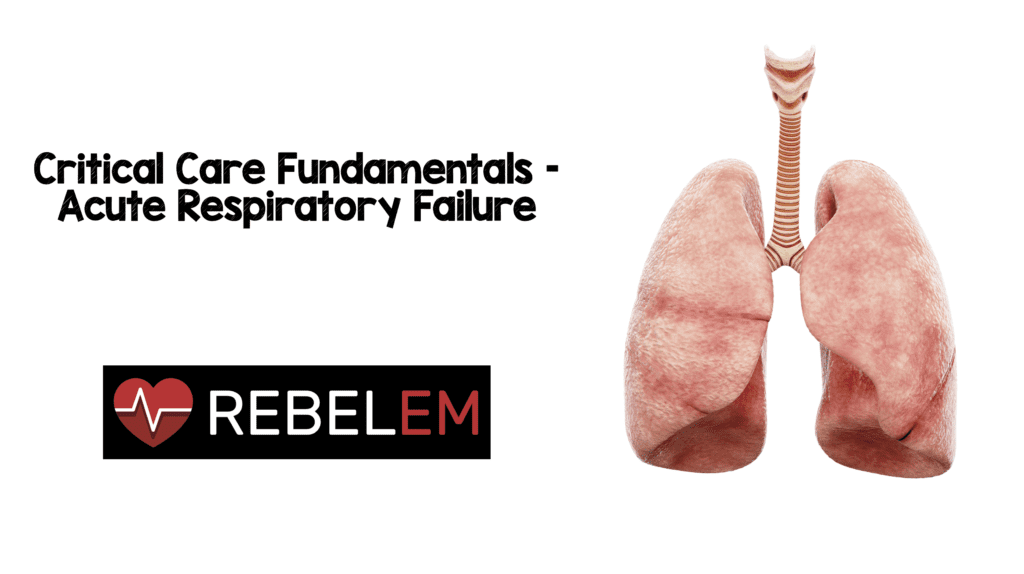
 Acute respiratory failure has many causes which can affect the ability to either take up oxygen (hypoxemic), eliminate carbon dioxide (hypercapnia), or both. Acute respiratory failure has many possible causes and in this post/video we will name the causes of acute respiratory failure and describe lung shunt physiology.
Acute respiratory failure has many causes which can affect the ability to either take up oxygen (hypoxemic), eliminate carbon dioxide (hypercapnia), or both. Acute respiratory failure has many possible causes and in this post/video we will name the causes of acute respiratory failure and describe lung shunt physiology.
[embedyt] https://www.youtube.com/watch?v=HqHH_N02yNo[/embedyt]
Also Be Sure to Checkout our YouTube Channel

4 Main Causes of Acute Respiratory Failure:
- Increased Work of Breathing: Look for the triad of Tachypnea(short shallow tidal volumes), Tachycardia and Diaphoresis (↑Catecholamine surge)
- Refractory Hypoxemia: SHUNT physiology!!
- Airway Protection: Look for the pooling of secretions in the airway
- Apnea/Hypopnea: Think of reversible causes first like hypoglycemia, opiates and benzodiazepines
- ↑WOB & Refractory hypoxemia: Depending on clinical situation, the use of NIPPV (BPAP,BiPAP) or Heated Humidified High Flow Nasal Cannula can be attempted
- Airway Protection & Apnea/Hypopnea: Typically will not be able to use NIPPV or HiFlow, but move to intubation

Critical Care Education Curriculum
Acute Respiratory Failure – Reinfocement Material
Acute Respiratory Failure – Supplemental Educational Material
Post Peer Reviewed By: Salim R. Rezaie, MD (Twitter: @srrezaie)
The post Critical Care Fundamentals: Approach to Acute Respiratory Failure appeared first on REBEL EM - Emergency Medicine Blog.
